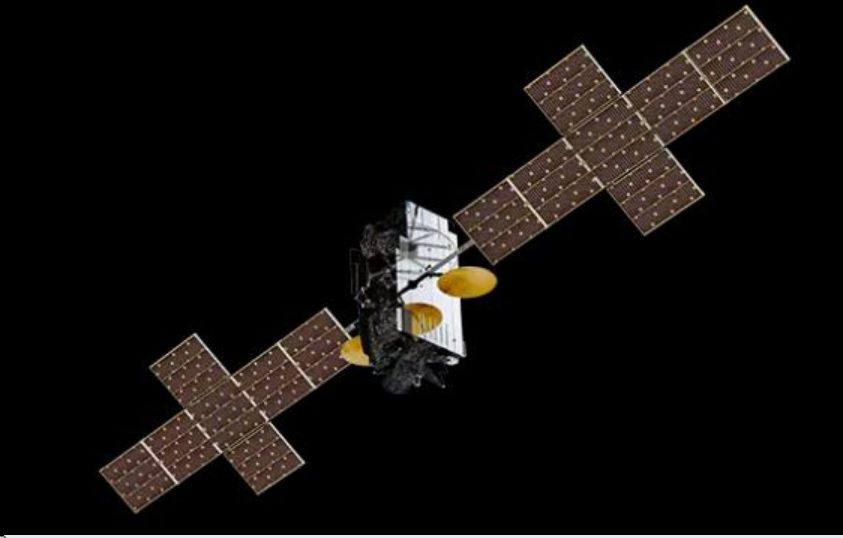A SpaceX Falcon Heavy (v1.2FT Block 5) rocket launched what is, to date, the heaviest ever communications satellite on its way to geostationary orbit: Echostar 24/Jupiter 3 on behalf of Echostar – Hughes Network Systems. The launch, which had been delayed for a few days by technical issues and by poor weather, finally took place from the Kennedy Space Center, Florida, USA at 0304 GMT on 29 July 2023. The SpaceX rocket carried two stages which had been used before: the pair of side boosters, B1064 and B1065, both of which were on their third flights and which made successful landings back at Kennedy Space Centre at Landing Zone 1 (LZ-1)and Landing Zone (LZ-2) respectively. The B1074 core first stage booster, which had not been used before, was for launch velocity maximisation reasons used as as expendable on this launch, falling down range into the Atlantic.

Falcon Heavy launches Jupiter 3/Echostar 24. Courtesy: SpaceX
The Echostar 24/Jupiter 3 satellite itself, which uses a Maxar 1300 design had a mass at launch of 9,200 kg, is a HTS (High-Throughput Satellite) with more than 500 Gbps total capacity. It was left by the Falcon 9 upper stage, via a parking orbit and two extra burns, in a 35,504 x 8,001 km transfer orbit inclined at 10.4 degrees relative to the equatorial plane. The satellite will raise itself to its eventual 95 degrees West orbital location in the zero inclination geostationary arc.

Artist’s impression of Echostar 24/Jupiter 3 in orbit. Courtesy: Maxar







